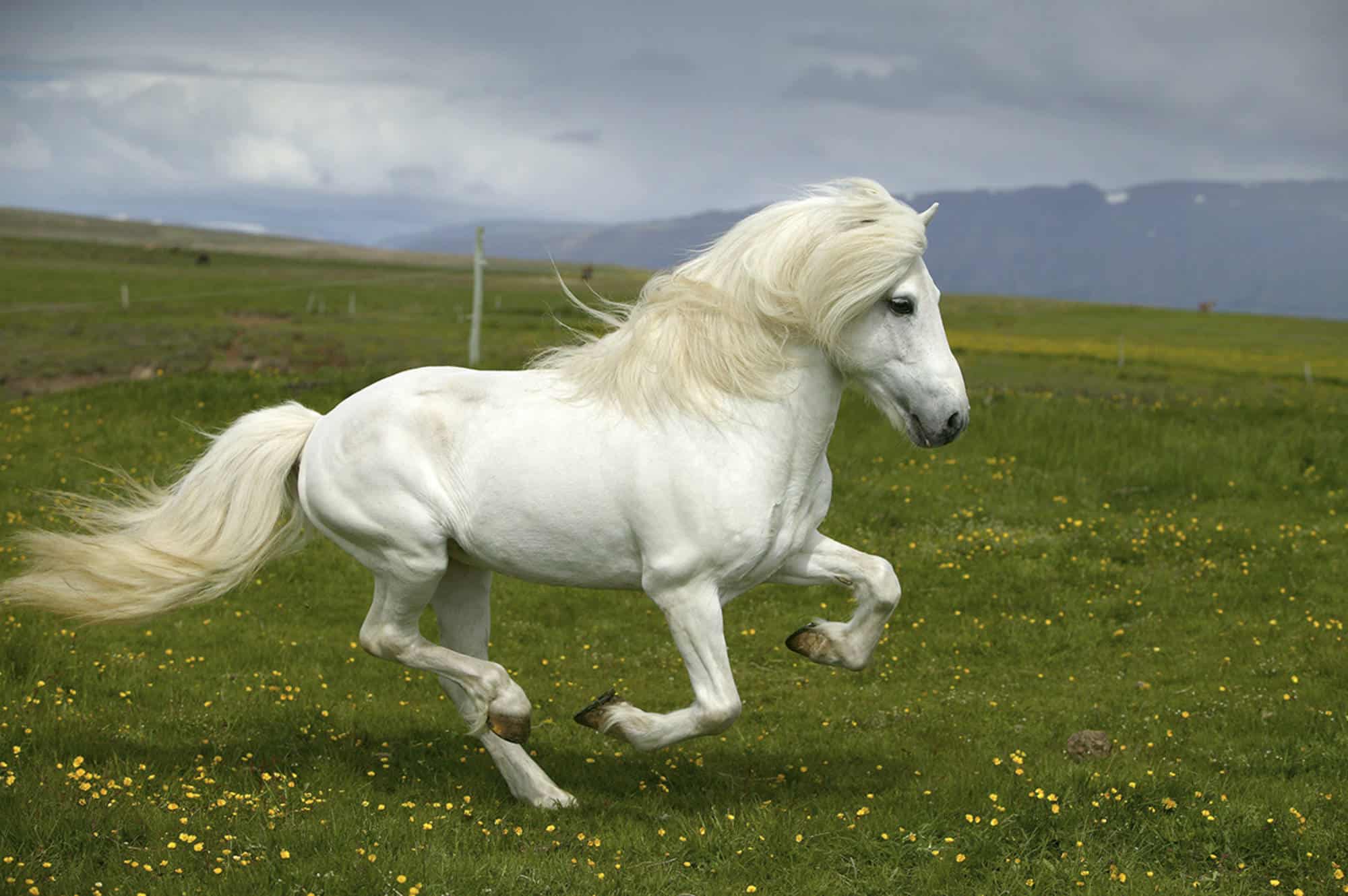The Incredible Icelandic Horse
Updated April 2022
The Icelandic horse is unique in many ways. From its unique color variations, five gaits and status as the only breed in Iceland, this friendly and sturdy small horse has been an inseparable part of Icelandic life from the very beginning. It has played a big part in the old Norse mythology as well as in the famous Icelandic Sagas.

The pure origin of the Icelandic horse
Brought over by the Norwegian settlers between 860 and 935 AD, the ancestors of the Icelandic horse likely mixed with the ancestors of Shetland, Highland and Connemara ponies to form the breed unique to Iceland. Early attempts to breed the horses with eastern breeds failed and led to the ancient Alþingi to ban import of horses altogether in 982 AD. This means that the Icelandic horse has been purebred for over 1000 years.
What do they look like?
Icelandic horses are small, around 132-142 cm. But they are not classified as ponies (and we take this very seriously so never refer to them as ponies around Icelanders!) because of their strength, weight carrying abilities and huge personalities. There are many color variations found in the horses’ coats. The Icelandic language has over 100 words for the various colors and color patterns.

What about the gaits of the Icelandic horse?
Another singular feature is the Icelandic horse’s five different gaits. The common gaits all horses have are called walk, trot, and canter. But the Icelandic horse can also pace and do what is called tölt. No other horse in the world can do the tölt, which is why the Icelandic word as stuck to this special gait. Tölt seems purposefully made for the often uneven ground of Iceland, providing a smooth and steady ride. You might say that tölt is like a faster version of walking. But it’s much more impressive as the horses lift their front legs up high, and only one foot touches the ground at any time. This high knee run might be familiar to runners as an excellent way to strengthen your legs and make you a better runner. Horses, they’re just like us! However, not all Icelandic horses can do the tölt, and those who have the ability usually need to be trained to do it properly. So if you want to experience the tölt on a riding tour, be sure to ask for a horse that can do it.

And their character?
As previously mentioned the Icelandic horse is famous for its friendly character and big personality. Experts aren’t sure whether this is solely because of genetics, or if the way we treat them plays a large part as well. Icelandic horses are often treated very much as members of the family.
The Icelandic horse is usually friendly, adventurous, smart, and quick to learn and very easy to handle. It is cooperative both on the ground and while ridden, yet also powerful and very willing to work. These qualities aren’t so surprising given the long distances and hard terrain they had to cover back in the days of the settlers. Import restrictions mean the breed has retained all these wonderful qualities even though they are now usually only used for light farm work and leisure.
Can you find the Icelandic horse abroad?
The import restrictions also mean that livestock diseases are exceptionally uncommon. They also mean that once an Icelandic horse has left the country it can never come back. Therefore the best horses are kept in Iceland to compete and breed. Riders can never take them abroad for competitions since they will likely have to sell the horse afterwards. Luckily Icelandic horses have become very popular internationally. The Icelandic breed has gradually developed into several strains. The biggest of these are the Svadastadir and the Hornafjordur strain. Horses descendant of Svadastadir are considered to have a more attractive gait and to be more dainty and frisky; while those from Hornafjordur are larger, and have greater endurance and courage. But they are all an integral part of our culture and the friendliest locals you’ll ever meet.